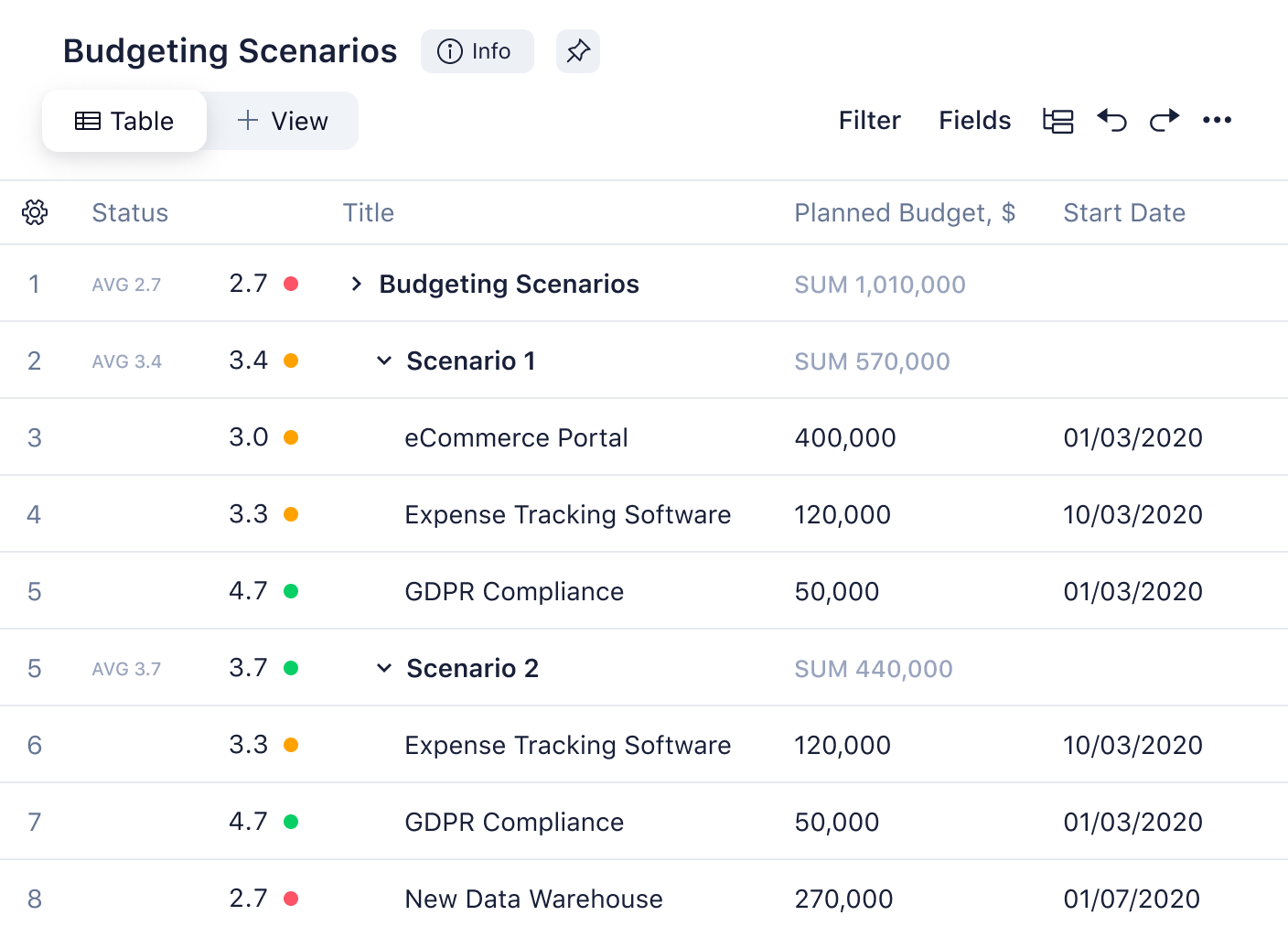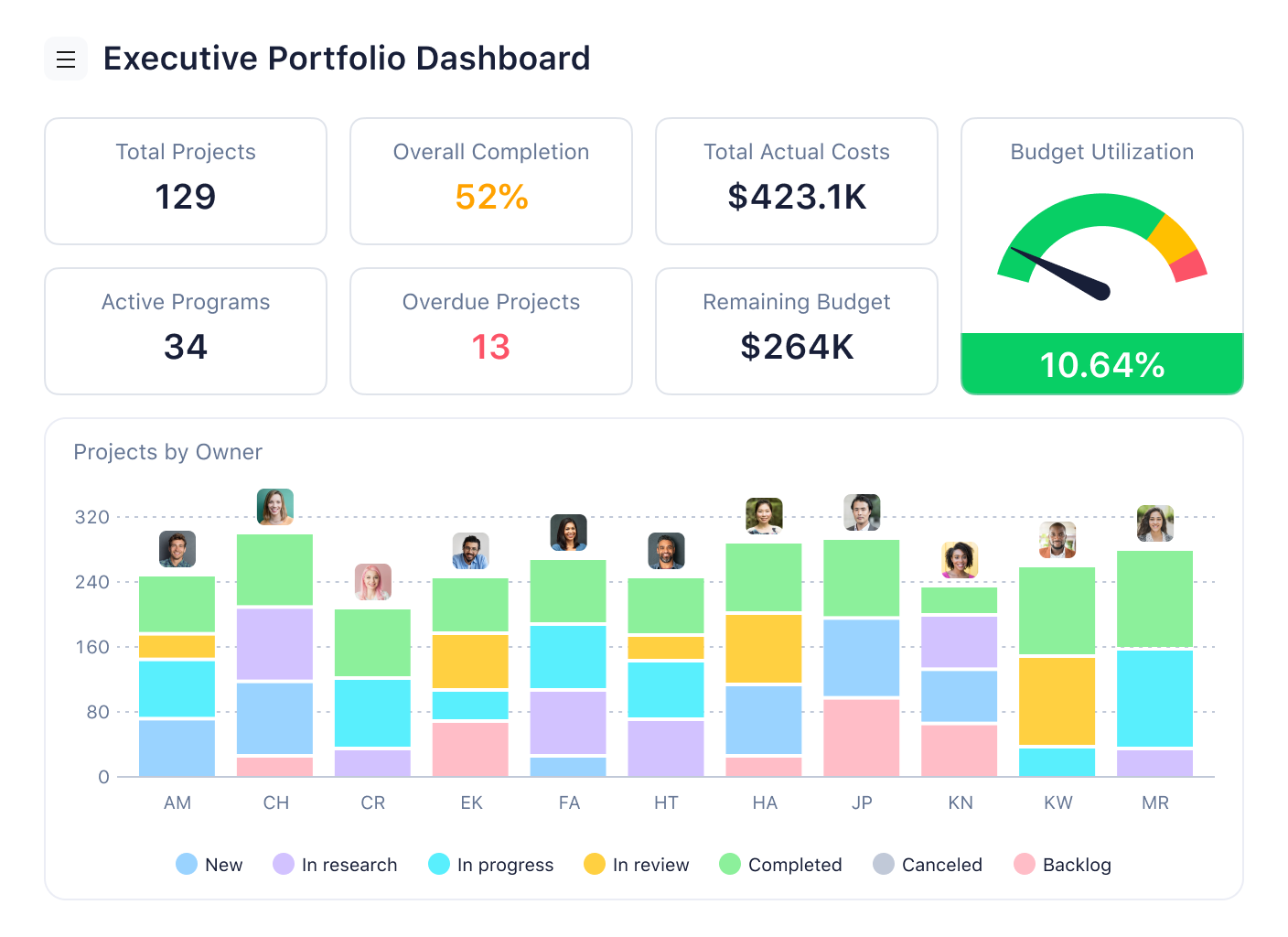What Is a Project Baseline in Project Management?
Project baselines play a crucial role in project management. They are used as a reference point to compare actual progress against the original plan, allowing project managers to track the project’s performance and identify deviations from the original plan. Baselines help keep the project on track and ensure it remains within certain constraints.
In this article, we’ll explore the concept of project baselines in more detail, including what they are, how they are set, and why they are essential to successful project management. We will also explore some examples and frequently asked questions.
If you would like to take your projects to the next level and have full control over project baselines, you can unlock a free trial with Wrike today.
What is a baseline in project management?
A project baseline is a clearly defined benchmark that measures a project’s progress against its original plan. It helps project managers evaluate performance and spot delays by comparing actual outcomes with the planned project scope, schedule, and budget.
For example, let’s say your project is on target to finish in six weeks. Is that good or bad? If your schedule baseline has a four-week completion, you can tell that there is a problem, and your project team may need to make adjustments to speed up your progress.
This consistent comparison helps track project performance over time and identifies bottlenecks early.
Project baseline components
A project baseline typically has three key components:
-
Schedule: Maps out the project timeline and milestones
-
Scope: Defines what the project will deliver
- Cost: Sets the budget for the project (typically, the cost baseline includes expenses like labor and materials)
Often, these three baselines are separately monitored, controlled, and reported to ensure each is on track. When fully integrated, they may be referred to as a performance measurement baseline (PMB).
A PMB provides you with the ability to efficiently monitor and manage how a change in one component affects the others. For example, when your baselines are integrated in your project planning phase, you can quickly tell how a schedule delay will impact project costs.
In the manufacturing industry, a production baseline is usually used to define the approved scope, schedule, and cost. However, many organizations do not have the tools and processes required to fully integrate the three baselines.
How do you set a project baseline?
To set a project management baseline, you must first determine the scope of your project. This can be done with a scope statement, which is a list of project objectives and deliverables.
Break down all the work required to achieve these deliverables into individual tasks and subtasks with detailed descriptions. You can use tools like a work breakdown structure (WBS) to simplify your baseline.
Next, you must map out your project schedule with clearly defined due dates and a final deadline. A good tool to use here is a Gantt chart, which can be easily edited and adjusted according to changing deadlines. Estimate how long each task will take and allocate resources accordingly.
Now, you should plan the total cost of your project. Take into account all relevant factors, including hourly rates, available resources, and varying pay-per-click (PPC) costs. Link this budget plan to your schedule to ensure the two are aligned.


Your project baseline must be clearly outlined before you can move on to the next stage: stakeholder buy-in. Set up a meeting to present your plan, address any stakeholder concerns, and make any necessary edits.
This is an important step in setting your project baseline, as it highlights any potential design flaws, which will be easier to fix before you start the project.
Watch our video below on how to set a project baseline.

Example of a project baseline
Take this social media marketing campaign as a simple project baseline example:
Your employer has asked you to create a social media campaign to coincide with the launch of a new product. You are allotted a project budget, and your goal is to build brand awareness and encourage early sales of the product.
Therefore, your project baseline could look something like this:
- Scope/deliverables: 500 direct sales
- Schedule: One month
- Cost: €1,000
In this project baseline example, you must first outline all the tasks needed to improve your conversion rate and achieve the end goal of 500 sales. This would include plans for social media posts for various platforms with detailed copy and design briefs.
You can then map out your schedule in a content calendar, including optimized dates and times for each post.
Finally, create a detailed budget to divide your costs across various sectors, e.g., PPC fees for Facebook ads.
Can you change a project baseline?
A project baseline should be documented and controlled. It should not be changed without following formal change control procedures, such as using a change request form and following a documented change approval process.
Frequently changing a project baseline can:
-
Disrupt progress tracking
-
Complicate resource planning
-
Increase the risk of missed deadlines
-
Cause confusion among stakeholders
- Make it harder for Agile teams to adapt to changes
However, when a significant change occurs, a project may be re-baselined. This means issuing a new, updated baseline to measure against. If this happens, it’s recommended to save the old baseline first. Then, create the new one as a new plan, so you do not lose that historical data.
What is the importance of a project baseline?
Why are baselines in project management so important? According to a McKinsey report, only one in 14 IT projects is delivered on budget and on time.
A project baseline helps you oversee the entire project, monitor performance, spot potential problems, and easily identify areas for change. The lack of project baseline management can lead to scope creep, cost overruns, and even project failure.
A good software system will enable you to effectively plan your project and create a project baseline that provides visibility to every project participant. All stakeholders must understand and support the project baseline so that everyone is aligned on OKRs.
Benefits of a project baseline
There are three main benefits of having an approved project baseline:
- Improved estimates: The ability to measure your actual cost, schedule, or scope against a baseline can help provide insight into where a project has under- or over-performed. This knowledge can then be used to improve future project plans and estimates.
- Better performance assessments: As mentioned above, a baseline provides a standard to measure a project’s progress. Without one, it is difficult to compare how a project is performing.
- Calculating earned value: Earned value (EV) allows you to compare actual performance against your plan. But, it’s more than a simple performance assessment tool. It also enables you to analyze project trends and forecast whether a project is expected to run into problems in the future. Read more about the benefits of EV management here.


Problems caused by not having a project baseline
There are at least six possible problems that may occur when a strong project baseline is absent:
- Inadequate resourcing: If you don’t have a planned schedule, you may not know which resources you will need and when.
- Schedule delays (due to mistimed procurement, material delivery, etc.): Without knowing when you need material, it’s difficult to ensure it’s ordered on time, especially if it’s something that needs to be ordered weeks or months in advance.
- Issues with quality management: An unclear scope baseline can result in substandard quality. For example, if you know paint is needed but not what color or finish, the outcome may not meet the customer’s quality standards.
- A lack of proper change management: Without baselines in place, it’s difficult to track and manage changes. You have no yardstick to measure against, so it can be challenging to know if your outcome is different than originally expected.
- The inability to accurately report progress: As with the earlier example, it’s difficult to tell if you’re running behind schedule if you don’t have a baseline to compare against.
- Customer and/or sponsor dissatisfaction: Any of the five problems above can result in poor project performance, which will mean unhappy stakeholders, including your customer and/or sponsor.
Manage your project baselines with Wrike
Do you have a clear baseline to guide your project? How do you ensure every team member aligns with the baseline in your project plan? Establishing baselines is paramount to understanding project goals and objectives.
Project baselines provide a foundation for successful project management. By establishing baselines for scope, time, and cost, project managers can keep the project on track and ensure it meets the stakeholders’ expectations.
Using Wrike, you can have full control over the three components of project baselines and make sure all stakeholders and team members have a common understanding of project goals. With Wrike, you can:
- Reduce risks and achieve project targets as intended
- Track project scope, schedule, and cost in real time
- Visualize progress with Gantt charts and dashboards
- Integrate change management in your workflows
- Monitor deviations from the baseline instantly
- Collaborate with stakeholders for quick approvals
- Generate detailed reports for performance analysis
Ready to take control of your project baseline? Get started today with a free two-week trial from Wrike.

Artem Gurnov
Artem is a Director of Account Development at Wrike. He previously held the role of Project Manager, overseeing a team of customer success managers (CSMs). Over the years of building teams and scaling business processes, he has successfully deployed multiple projects, from automating client outreach to setting up work prioritization tools for sales reps and CSMs.


